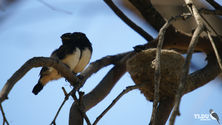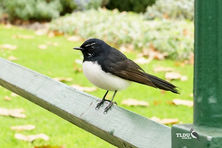
Shoppers Feedback:
Jan 17, 2017
Hello Ros,
I have now paid the invoice, but I would like to write to you just to say a big THANK YOU for getting me the Penguin!
The ChatterMate Penguin became a nice memory for me when I was in New Zealand, and I am so greatful to you for arranging so that I could have it! :-)
Thank you so much!!!!!!!!!!!
Regards,
Malin
Hi Ros,
Many thanks for your very kind email. I really appreciate your prompt reply!
I appreciate your advice regarding the decorations and customs. These are a gift for my daughter’s exchange student family so when she returns home on the weekend I will show her and see if she loves them as much as I do!
Thanks so very much again - I am truly grateful for your kind assistance.
Kind Regards
Bernadette
Ros,
Thanks again for the great customer service. It's a refreshing change!
Best regards,
Trevor
Hey Roz,
Thank you for your emails. Just loved my first order. The cute little Aussie bush critters are going to be used for an office Christmas decoration. My colleagues also liked them and talked about making an order to your site. I'll send you a photo when completed.
I'll be ordering more to send to my daughter's host family in America.
Fabulous service from you.
Kind regards,
Michelle
Thankyou. Order arrived today. One very happy grandson with his new beastly binoculars.
Regards,
Irene
- Home
- Wild Wonders
- Shop
- Aromas of Australia
- Australian Made
- Books
- Book Marks
- Christmas Decoration Sale
- Christmas Decorations
- Clocks
- Drink Holders
- Garden & Outdoor
- Gift Wrapping & Cards
- Home & Giftware
- Jewellery
- Keyrings
- New Products
- Pencils & Pen Holders
- Photo Frames
- Plush Toys
- Plush with Sound
- Sheepskin Rugs
- Stationery
- Stone Carvings
- Toys & Games
- Travel Goods
- Wedding
- Wild Figurines
- Wildlife Safety Products
- Wind Chimes
- Wine Charms
- View All Products
- Wildlife
- Australiana
- Explore
- Contact Us
Willie Wagtail

Quick Facts
| Length: | 20 cm |
| Height: | - |
| Weight: | 20 grams |
| Colour: | - |
| Habitat: | Mostly open areas such as forests and woodlands. Often found near water courses |
| Food: | Insects |
| Predators: | - |
| Status: | Not Present in TAS. Secure in all other states and territories |
The Willie Wagtail is the largest, and most well-known, of the Australian fantails. The plumage is black above with a white belly. The Willie Wagtail can be distinguished from other similar-sized black and white birds by its black throat and white eyebrows and whisker marks. The name wagtail stems from the constant sideways wagging of the tail. Young birds resemble the adults, but have paler, slightly rusty edges to the feathers of the wings.
The Willie Wagtail is found throughout mainland Australia but is absent from Tasmania.
Willie Wagtails are found in most open habitats, especially open forests and woodlands, tending to be absent from wet sclerophyll forests and rainforests. They are often associated with water-courses and wetlands and are common around human habitation.
Although usually seen singly or in pairs, it may form winter flocks, often mixed with other species.
Willie Wagtails are active feeders. Birds can be seen darting around lawns as they hunt for insects on the ground. As they do so, the tail is wagged from side to side. Insects are also captured in the air, in active chases.
The Willie Wagtail is often found in the company of cattle and sheep. They either run behind the moving animal snatching insects as they are disturbed, or sit on the animal's back, darting off to capture a flying insect and then returning to its mobile perch.
The Willie Wagtail's nest is a neatly woven cup of grasses, covered with spider's web on the outside and lined internally with soft grasses, hair or fur. The soft lining of the nest, if not readily available, is often taken directly from an animal. The nest of the Willie Wagtail may be re-used in successive years, or an old nest is often destroyed and the materials used in the construction of a new nest. Nests are normally placed on a horizontal branch of a tree, or other similar structure. The cream-coloured eggs, speckled with grey and brown are incubated by both sexes. The young birds stay with the parents until the eggs from the next clutch start to hatch. At this point they are driven away. If conditions are favourable, the couple may raise up to four successive clutches in a single season.
Although it is active in defending its territory, the Willie Wagtail is very tolerant and tame around humans, often feeding and nesting in close proximity of houses and human activity.
Last Updated: Friday 6th September, 2013
BirdLife Australia - www.birdlife.org.au
BUSH e-TELEGRAPH
Signup for our monthly newsletter the "e-Telegraph"
Quick Links
Home | The Beginning | About The Land Down Under | Wild Wonders | Advertise on Wild Wonders | Christmas Decoration Sale | Christmas Tree Decorations | Drink Holders | Plush with Sound | Stone Carvings | Wildlife Wine Charms | Freebies | Australian Wildlife | Help Our Wildlife | Australiana | Photo of the Month | Explore The Land Down Under | Contact Us | Legal Notices


